Introduction
Architectural rendering stands at the intersection of creativity and technical precision, serving as an indispensable tool in the design process. This practice not only enables architects and clients to visualize concepts with remarkable clarity but also fosters effective communication among all stakeholders involved. As the industry evolves, the significance of high-quality renderings becomes increasingly evident, particularly in securing investments and streamlining project approvals.
This article delves into the multifaceted world of architectural rendering, exploring its various types, the intricate processes involved in their creation, the challenges faced by professionals, and the future trends shaping this dynamic field. By understanding these elements, architects can harness the power of rendering to elevate their designs and enhance client satisfaction.
The Significance of Architectural Rendering in Design
Architectural visualization serves as an essential resource in the design process, allowing architects, customers, and builders to see concepts in a realistic manner. This visualization aids in bridging the gap between abstract ideas and tangible outcomes, facilitating better communication and understanding among all parties involved.
The role of pre-sales visualization is particularly significant, as it enhances confidence in the endeavor and ignites interest and investment long before physical construction begins. For instance, in a recent renovation initiative, our detailed visuals enabled the customer to envision the final outcome, which was crucial in obtaining early funding.
Through these detailed visualizations, architects can demonstrate the functionality and aesthetics of a project, enabling early detection of design flaws and offering a platform for customer feedback. This iterative process not only streamlines decision-making but also ensures that the final product aligns with the customer’s vision.
One customer commented, ‘The visuals surpassed my expectations and made it simple to understand how everything would fit together.’ Furthermore, high-quality renderings can enhance marketing efforts, effectively showcasing projects to potential investors and buyers, thereby increasing the likelihood of project approval and funding.
Testimonials from pleased customers underscore the importance of these services, reflecting the trust and reliability that J. Scott Smith Visual Designs strives to build in every partnership. As one client stated, ‘Working with J. Scott Smith Visual Designs transformed our vision into reality.
Exploring the Different Types of Architectural Rendering
Architectural visualization can be classified into various forms, each fulfilling unique objectives and target groups, playing a crucial role in the creation process. Common forms include:
2D Illustrations: Frequently employed for conceptual designs, these visuals offer a flat perspective of the scheme, emphasizing layout and spatial relationships without the depth of 3D visualization. They can help stakeholders understand initial concepts but may lack the engagement of more advanced forms.
3D Renderings: The most popular and widely used types, 3D renderings provide a three-dimensional view that allows for a more realistic representation of the project. They incorporate textures, lighting, and landscaping elements, enhancing visualization and facilitating better decision-making during presentations. Additionally, they assist in avoiding expensive modifications by enabling users to visualize various design alternatives early in the process.
Photorealistic Representations: High-fidelity images that mimic real-life photography, these visuals capture light, shadow, and material properties with exceptional accuracy. They are invaluable for marketing and promotional purposes, helping to differentiate properties in competitive markets and increase perceived value.
Virtual Reality (VR) Visualizations: As a developing trend, VR visualizations immerse users in a virtual environment, providing an interactive experience that greatly improves comprehension and involvement. This technology can result in improved choices by enabling users to explore areas as if they were physically present.
Animation Visualizations: Offering a dynamic perspective of the architectural concept, animation visualizations enable stakeholders to see how the space will operate over time. This is especially beneficial for intricate tasks, as it helps in recognizing possible structural problems early and promotes efficient communication among architects, customers, and contractors.
Each kind of depiction offers its own advantages and uses, and choosing the suitable one relies on the goals of the endeavor, audience, and phase of the design process. Utilizing high-quality architectural visuals not only enhances client satisfaction but also plays a crucial role in optimizing business efficiency and market positioning. Moreover, companies should contemplate outsourcing 3D architectural visualization services to utilize specialized knowledge, which can result in cost reductions and enhanced results. By incorporating these visualizations into their workflow, architects can enhance their marketing strategies and ultimately increase the value of their projects.
The Process of Creating Architectural Renderings
Producing architectural renderings entails several key steps, each necessitating specific skills and tools vital for capturing the essence of the concept. The process typically begins with the collection of planning data, including architectural plans, elevations, and materials. Following this, the visualizer employs advanced software such as AutoCAD, SketchUp, or Revit to construct a detailed 3D model.
Once the model is established, textures and lighting are meticulously applied to enhance realism, reflecting the intended aesthetic of the project. This phase is vital as it guarantees the precision of the visuals through close cooperation with clients and thoughtful evaluation of creative components. Afterward, the visualization is processed using cutting-edge tools like V-Ray or Lumion, which simulate real-world lighting and shadow effects, vital for achieving high-quality outcomes.
Factors influencing the pricing of exterior 3D visualizations include the complexity of the design, the level of detail required, and the time needed for revisions. Comprehending these elements can assist clients in budgeting efficiently for their endeavors. Finally, post-processing techniques are applied using software like Adobe Photoshop to refine the images, ensuring they meet the highest presentation standards.
This meticulous process not only highlights the artistic vision and technical expertise required in architectural visualization but also serves as a powerful communication tool, enhancing decision-making and securing approvals, particularly in capital campaigns and community engagement efforts. High-quality visuals play a significant role in highlighting a venture’s unique characteristics and overall appeal, making them invaluable assets in gaining support and investment.
Challenges in Architectural Rendering
Achieving a high level of precision in architectural visualizations is paramount, yet it remains a significant challenge. Recent research suggests that as much as 30% of architectural visuals contain errors when compared to the final outcome, resulting in misunderstandings and delays. The joint creation process at J. Scott Smith Visual Designs starts with initial communication, where we collect specifications and establish a clear vision. This iterative development phase ensures that our team closely collaborates with customers, incorporating their feedback to refine the visual representations until they accurately reflect the intended vision.
Managing customer expectations is another complex issue; customers often have varying levels of understanding regarding the realistic portrayal capabilities of visuals. For example, one effective approach is to offer clients a side-by-side comparison of visuals and finished projects, assisting them in visualizing the shift from concept to reality. An industry expert, Elif Ayse Sen, aptly notes, ‘As we continue to navigate the evolving landscape of architectural visualization, it’s clear that the fusion of technology and creativity is reshaping our approach to design visualization.’ The labor-intensive nature of producing high-quality visuals also poses a challenge, with tight deadlines often threatening the final output. Furthermore, as the graphics industry evolves in 2024, new technologies such as AI-driven tools are emerging, necessitating continuous learning and adaptation to the latest instruments and techniques. Cloud-based solutions have become crucial, enhancing management by providing centralized access to 3D models and facilitating real-time updates, significantly improving collaboration and security. A case study titled ‘Cloud-Based Solutions for Seamless Project Management’ reveals that such platforms not only enhance management agility but also foster a collaborative environment for innovative design solutions.
To effectively tackle these challenges, clear and ongoing communication with clients is essential, ensuring they have a realistic understanding of what visualizations can achieve. Devoting time to professional growth and keeping up with technological innovations will assist visualizers in preserving their advantage in this evolving field, ultimately leading to remarkable 3D images that are essential for informed decision-making and successful outcomes. Ready to bring your architectural vision to life with stunning clarity and precision? Contact us today to start your project! Following our initial discussions, we will provide you with a tailored proposal that aligns with your vision.
Future Trends in Architectural Rendering
The future of architectural visualization is poised for significant transformation, propelled by advanced technological innovations. At the forefront of this evolution is artificial intelligence (AI), which automates numerous aspects of the production process, leading to reduced production times and enhanced precision. AI algorithms can examine creation data to produce highly realistic representations of lifelike computer-generated (CG) humans, effectively bridging the uncanny valley and enhancing architectural visualizations. As noted by Julia Morgan, ‘Architecture is a visual art, and the buildings speak for themselves.’ This is increasingly true as AI improves our ability to create immersive experiences that resonate with clients.
As we approach 2024, several key trends are set to shape architectural rendering technology. The combination of augmented reality (AR) and virtual reality (VR) is expected to become more widespread, enabling users to interact profoundly with concepts in immersive settings. This leap in technology promises to refine decision-making processes, facilitating real-time modifications based on client feedback, ultimately enhancing satisfaction and project outcomes.
Additionally, the role of AI in architectural visualization will continue to expand. Advanced machine learning algorithms will provide sophisticated tools for visualizers, enabling them to anticipate results and optimize workflows. Insights from industry experts suggest that AI will simplify visualization processes while enhancing the creative aspects of aesthetics, allowing architects to explore innovative concepts with greater freedom.
The significance of lighting in architectural visualizations cannot be overstated, as it differentiates between the atmospheric qualities of interior and exterior spaces. In interiors, the interplay of artificial light sources with natural elements creates a compelling sense of realism, which can be challenging to balance, especially when depicting how various light sources interact with materials like glass and fabric. Exterior visuals must account for the dynamic effects of sunlight on materials such as glass, concrete, and metal, requiring a deep understanding of how natural light casts shadows and highlights architectural features. These materials must be depicted accurately to convey their durability and aesthetic appeal under varying weather conditions, further emphasizing the need for high-quality visualizations.
As sustainable design practices gain traction, there is a heightened focus on visuals that accurately represent eco-friendly materials and energy-efficient designs. These visualizations serve as essential tools for architects to showcase sustainable features to stakeholders, aligning with rigorous environmental standards and addressing the growing demand for responsible building practices.
In summary, the architectural visualization landscape is continuously evolving, adapting to the latest technological advancements and client expectations. As we look ahead to 2024 and beyond, these trends highlight the dynamic and progressive nature of the field, underscoring the critical role that intricate details play in enhancing realism and emotional impact in architectural renderings.
Conclusion
Architectural rendering is an essential tool that transforms abstract concepts into tangible visualizations, fostering effective communication among architects, clients, and stakeholders. By employing various rendering types—such as 2D, 3D, photorealistic images, and virtual reality—architects can enhance client understanding and facilitate early detection of design flaws, thereby securing investments and project approvals.
The rendering process demands meticulous attention to detail, advanced software capabilities, and a deep understanding of design principles. While challenges like managing client expectations and ensuring accuracy persist, clear communication and continuous professional development are vital in overcoming these obstacles.
As the field evolves, advancements in artificial intelligence and immersive technologies like augmented and virtual reality are set to revolutionize architectural rendering. These innovations promise to streamline workflows and enhance client engagement, enabling real-time modifications and interactive experiences with designs. Furthermore, the increasing emphasis on sustainability will drive demand for renderings that accurately reflect eco-friendly materials and energy-efficient designs.
In conclusion, leveraging the power of architectural rendering is imperative for architects aiming to elevate their designs and improve client satisfaction. By embracing technological advancements and fostering collaboration, architects can create renderings that not only meet but exceed client expectations, positioning themselves for success in a competitive landscape.
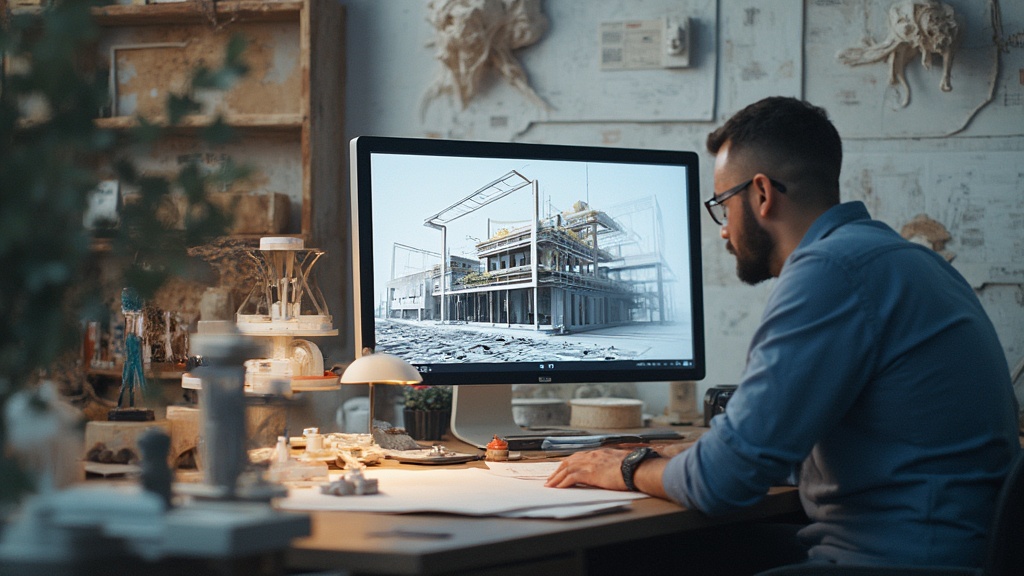
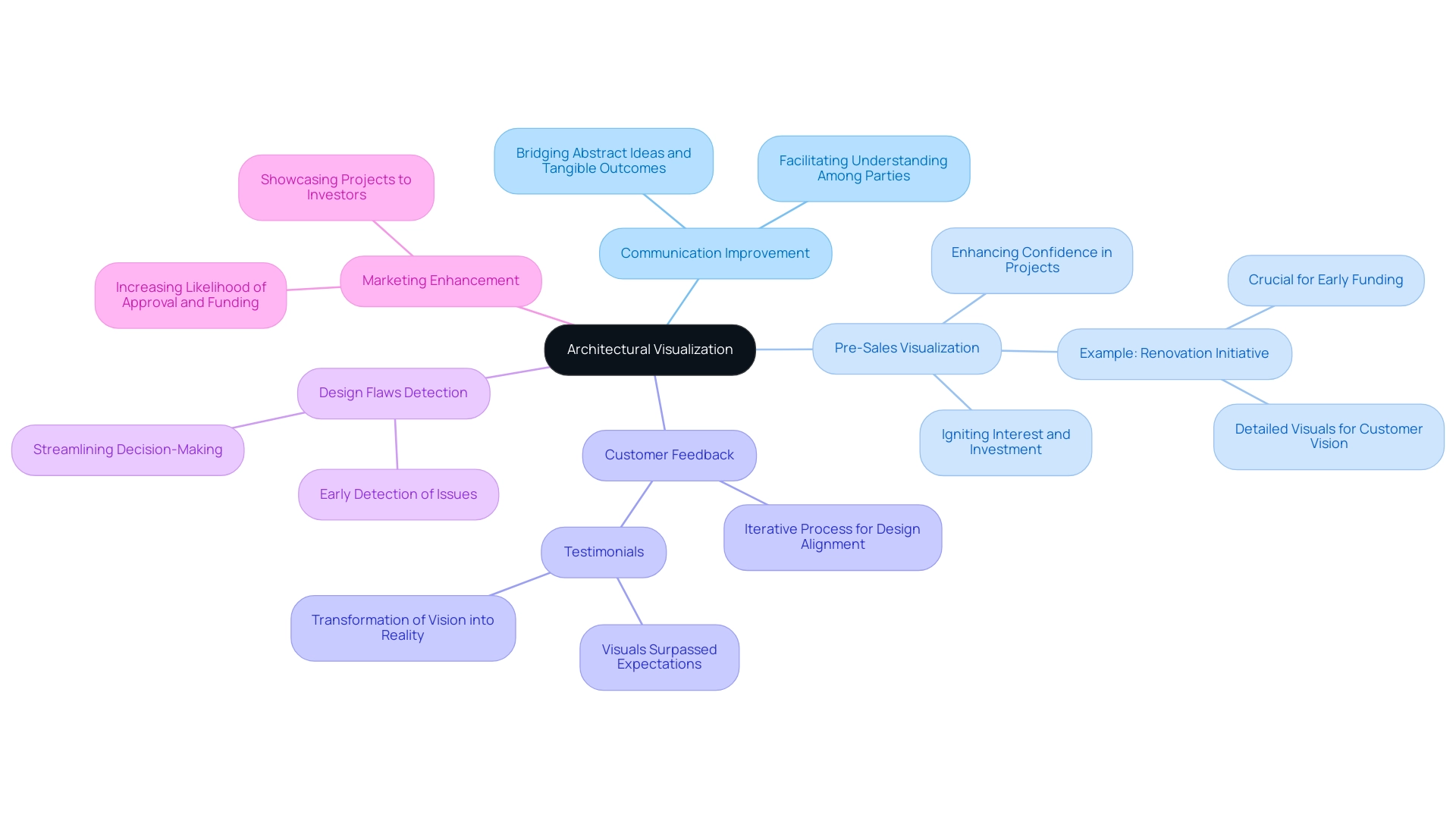
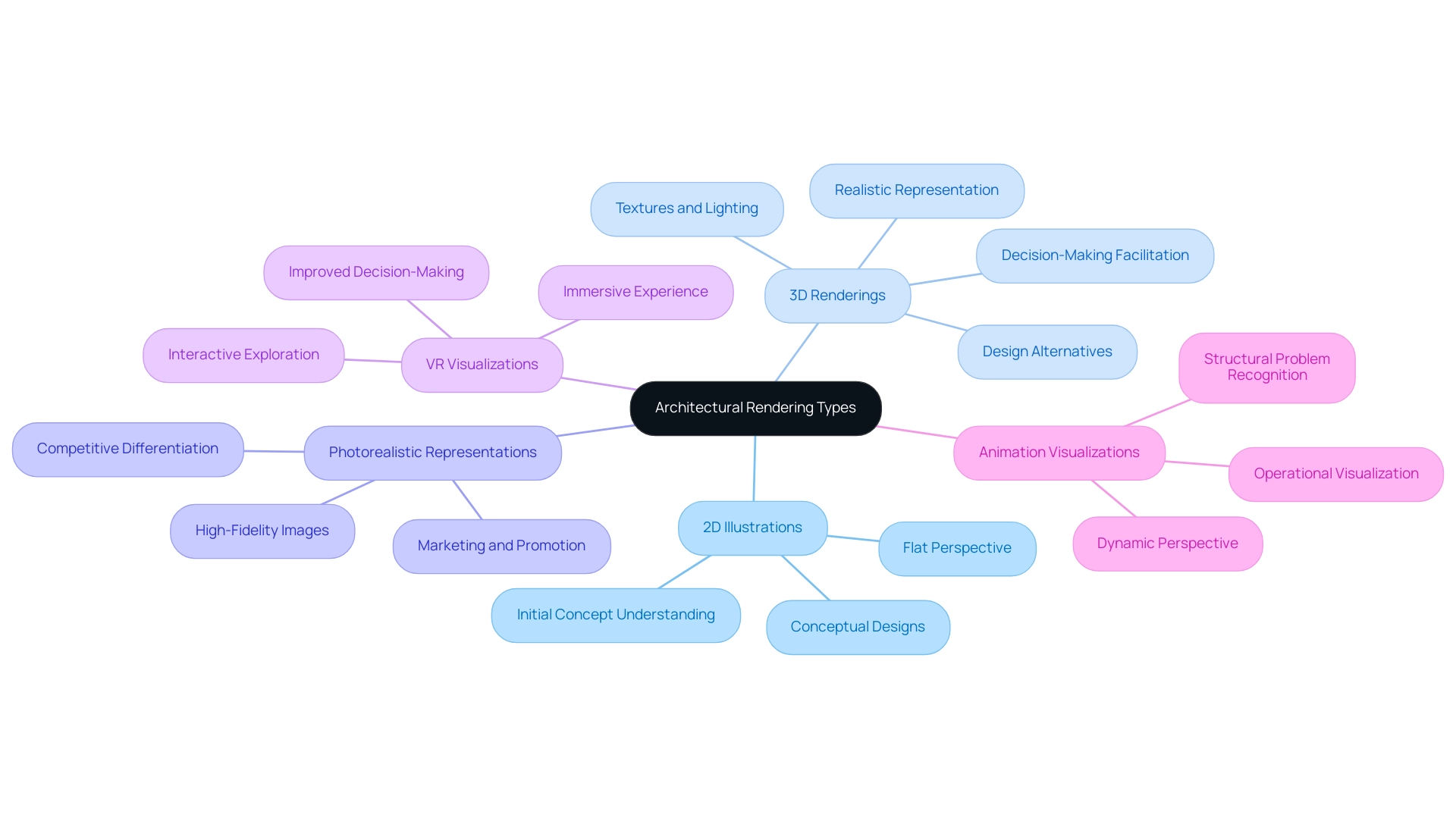
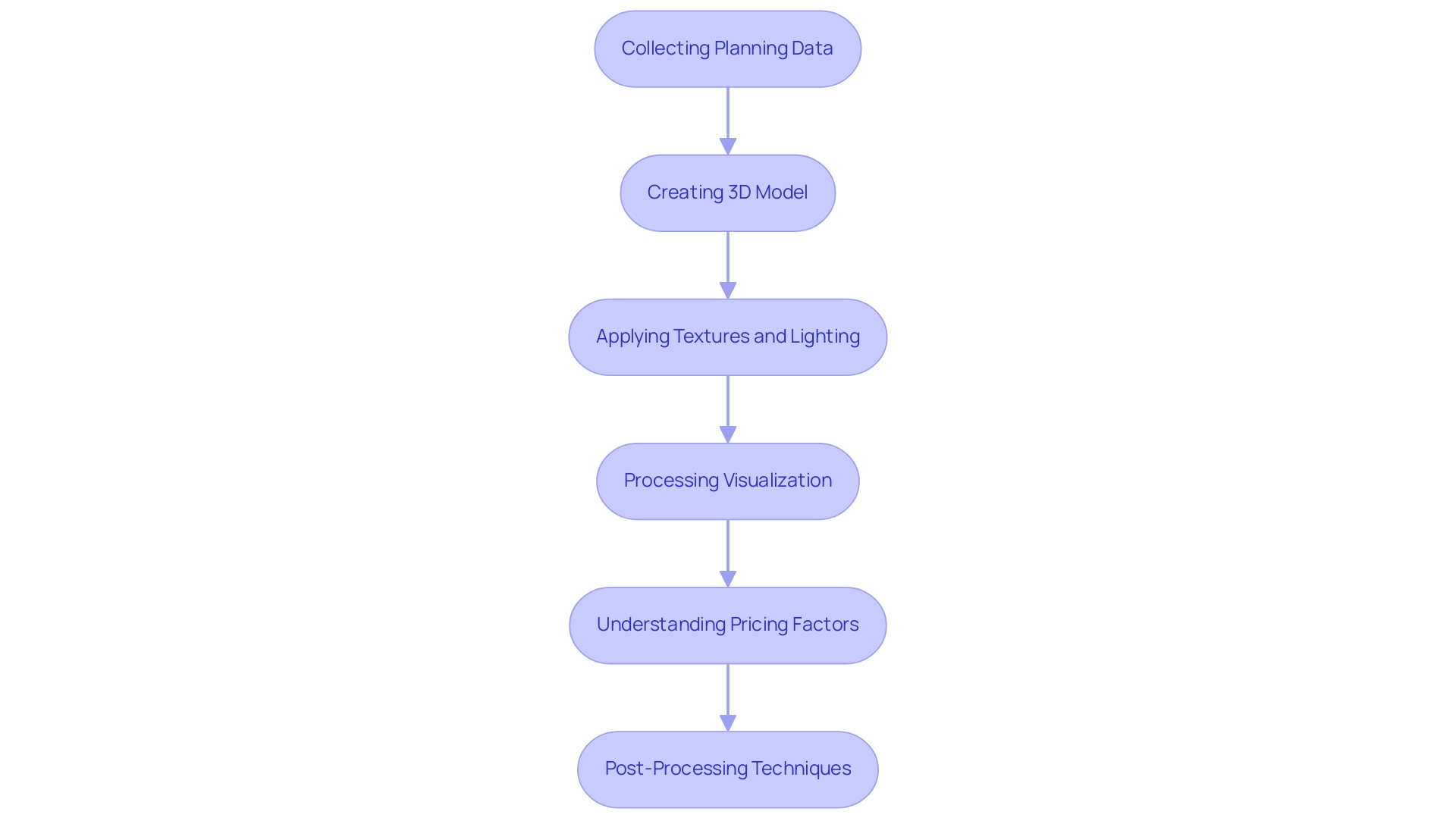
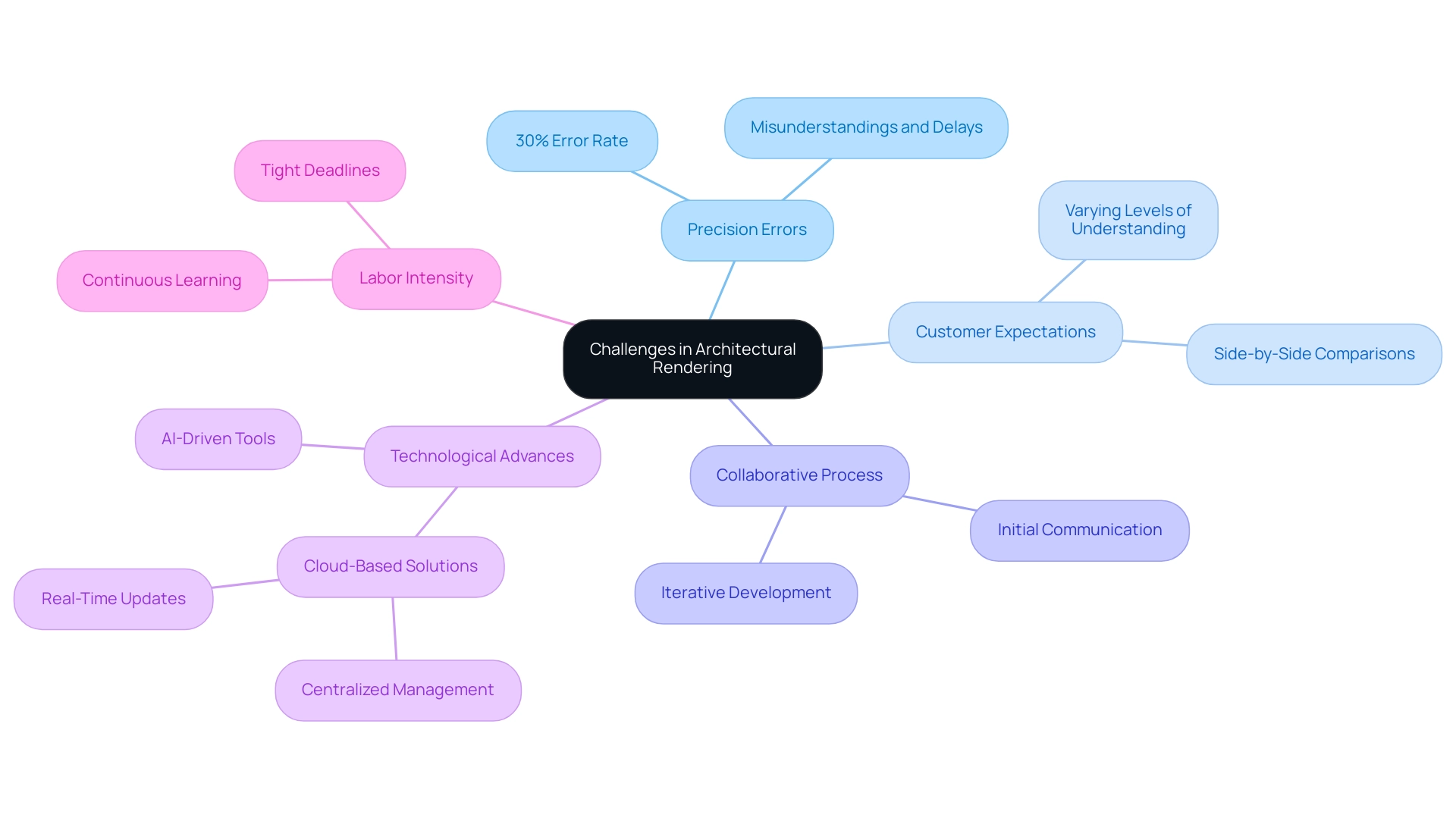
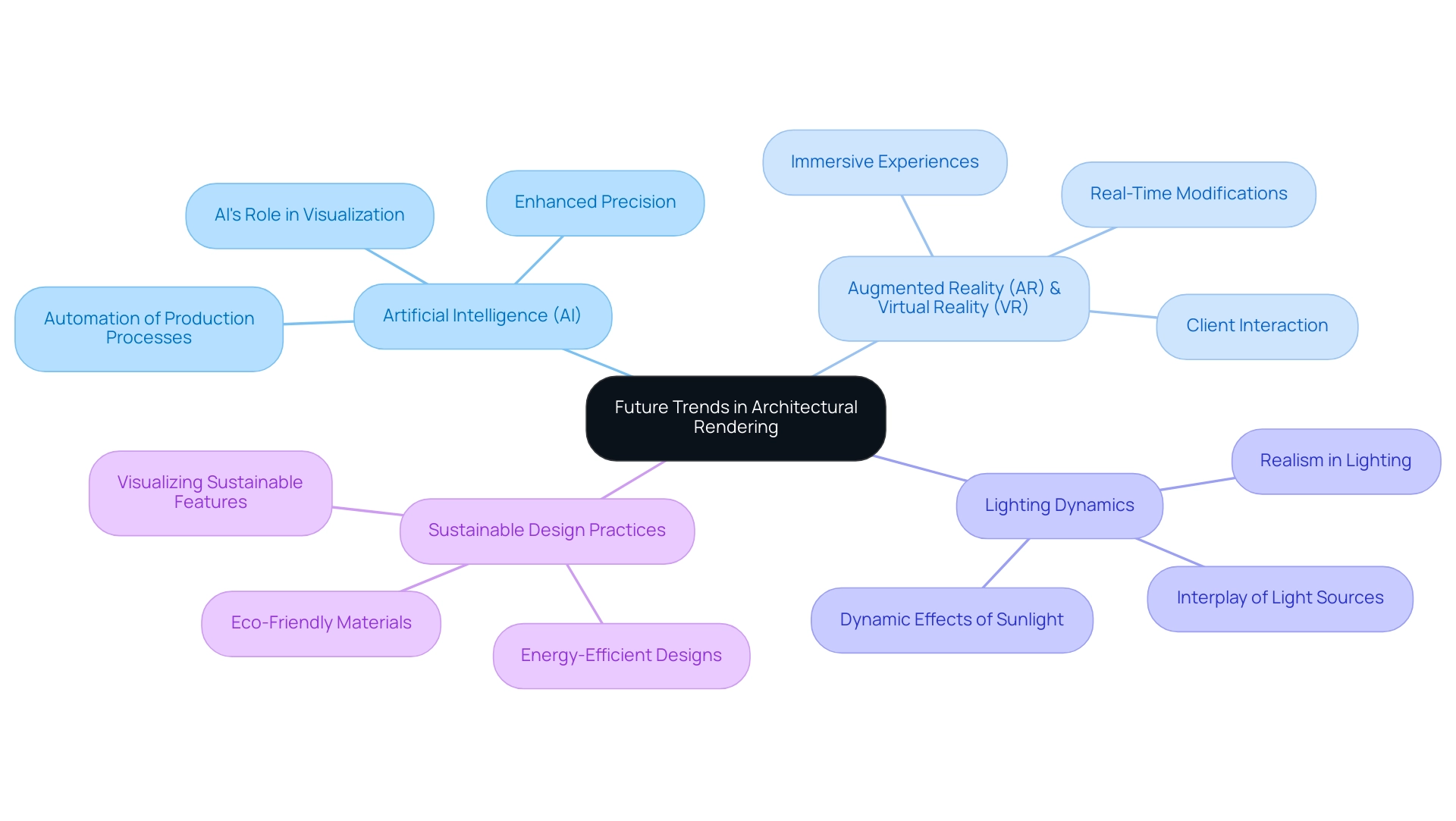
0 Comments